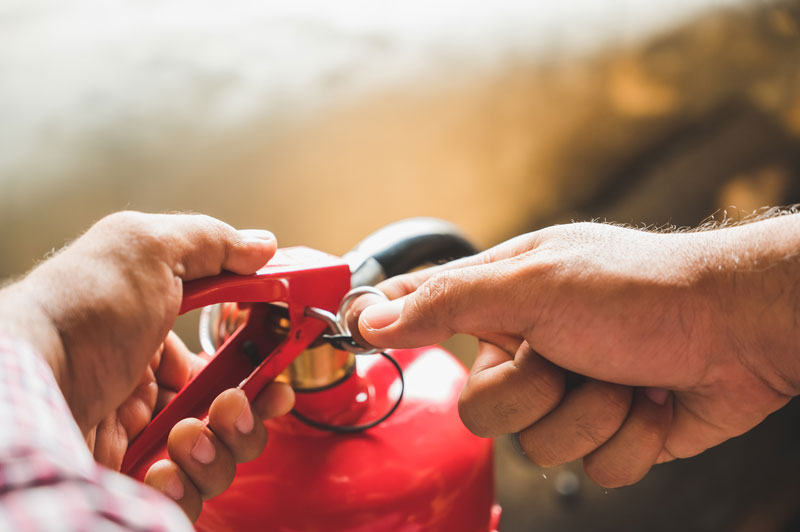
What is the PASS fire extinguisher method?
PASS stands for Pull, Aim, Squeeze, Sweep and refers to the correct and safest way to extinguish a fire using a fire extinguisher. It is a useful way to remember each step when it comes to extinguishing a fire.
-
PULL
If you need to use an extinguisher, the first thing you need to do is pull out the safety pin, enabling you to push the handle down.
-
AIM
After you have pulled the pin out, you need to aim the nozzle at the base of the fire. If the extinguisher is aimed too high, the source of the fire is more likely to continue to burn.
-
SQUEEZE
Next, you should squeeze the handle to activate the fire extinguisher and discharge its contents. It is vital to use the correct type of fire extinguisher for the class of fire that is burning.
-
SWEEP
For the most effective results, when squeezing sweep the nozzle from side to side, covering the base of the fire and fully extinguishing the flames
You can also watch our video to see the PASS technique in action here
CO2 Fire Extinguishers
It is worth noting that CO2 extinguishers are different to other types of fire extinguishers, and it is important you are aware of the difference when using one. Due to the nature of a CO2 fire extinguisher's contents, the nozzle must not be touched during discharge, as the extremely cold temperatures which result can burn the user's hand.
The Firechief range includes high-performance fire extinguishers, fire blankets, first aid kits, lithium-ion fire extinguishers for your home and leisure time. For more information, call us on +44 (0)330 999 0019 or email sales@firechiefglobal.com.
The information contained within this blog is provided solely for general informational and educational purposes and is not intended as a substitute for professional advice. Before taking any actions based upon this information, we advise the reader to consult any and all relevant statutory or regulatory guidance and where felt necessary to consult a qualified fire or industry regulation professional. The use or reliance on any information contained herein is solely at the reader's risk.

